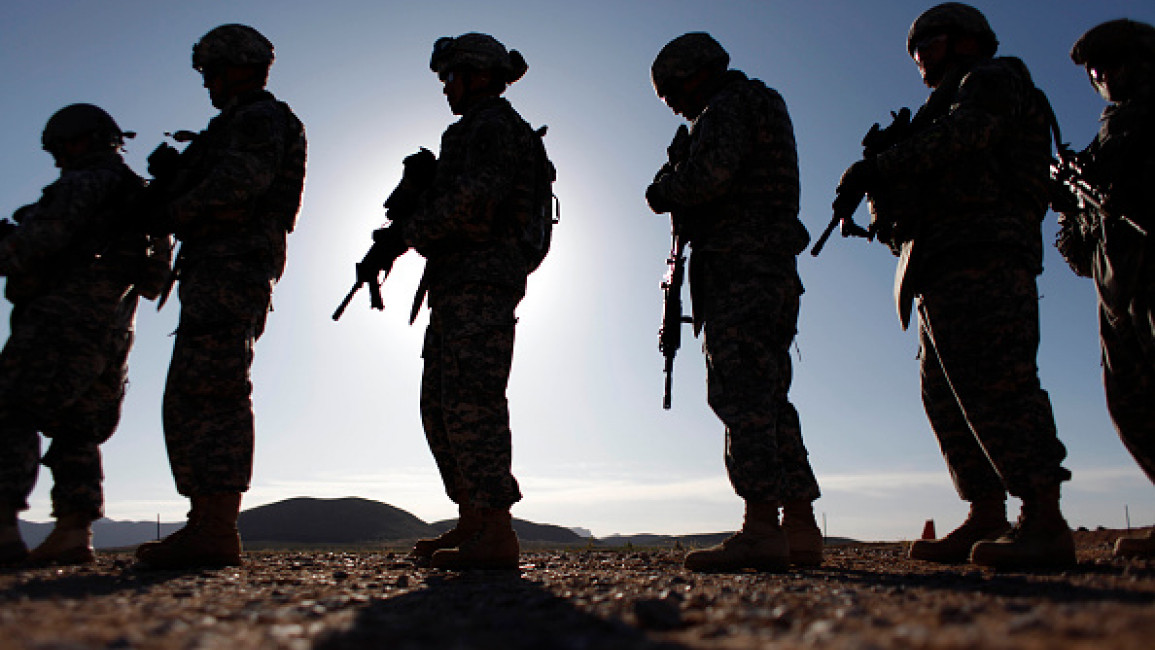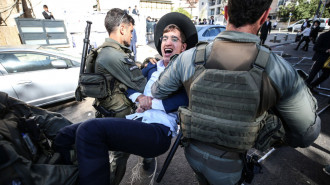40 years after barracks bombing in Beirut, US troops again deploy east of Mediterranean
Forty years after one of the deadliest attacks against U.S. troops in the Middle East, some warn that Washington could be sliding toward a new conflict in the region.
On 23 October, 1983, a suicide bomber hit an American military barracks at Beirut International Airport, killing 241 U.S. service members, most of them Marines – still the deadliest attack on Marines since the World War II Battle of Iwo Jima. A near-simultaneous attack on French forces killed 58 paratroopers.
Washington blames the bombings on the Lebanese militant group Hezbollah, a claim the Iranian-backed Hezbollah denies. The U.S. and French forces were in Beirut as part of a multinational force deployed amid Israel’s 1982 invasion of Lebanon. The force oversaw the withdrawal of Palestinian fighters from Beirut and stayed afterward to help a Western-backed government at the time. The bombing prompted a U.S. withdrawal from Lebanon.
The United States is now deploying forces again in the region in connection to a war between Israel and its enemies.
The aircraft carrier USS Gerald R. Ford has been positioned in the eastern Mediterranean along with other American warships – with a second carrier on the way – in what is widely seen as a message to Iran and Hezbollah not to open new fronts as Israel fights Hamas.
Longtime tensions between the U.S. and Iran have been hiked by the two-week-old war between Israel and Hamas, in which the Palestinian militant group’s 7 October surprise attack on southern Israel brought devastating Israeli bombardment of the Gaza Strip.
Israel has imposed a blockade on Gaza since 2005, and after 7 October laid a total siege on the territory.
"The situation is extremely dangerous. Even though neither side wants to get into full-scale war, they could easily trip into one."
— The New Arab (@The_NewArab) October 15, 2023
War with Israel or caution: What will Hezbollah do next? https://t.co/MyEfpTMEuW
The war risks spiraling into a wider regional conflict. The biggest worry is over the Lebanon-Israel border, where Israel and Hezbollah exchange fire on a daily basis.
But there are other spots where the U.S. could be dragged directly into the fight. There are roughly 2,500 U.S. troops in Iraq and around 900 others in eastern Syria, on missions against the Islamic State group. In both countries, Iran has militias loyal to it that already have opened fire on the Americans since the Gaza war erupted.
A Hezbollah supporter who goes by the name of Haj Mohammed posted a video on Tiktok on 13 October that drew a threatening parallel between the barracks bombing 40 years ago and present-day events.
"It seems that Uncle Joe did not tell the commanders of these warships and aircraft carriers about what happened on October 23, 1983," the man said, referring to President Joe Biden. Sitting in front of a poster of Jerusalem’s Dome of the Rock, he wondered aloud whether U.S. troops will return home in coffins again.
Iran-backed groups have issued threats against the U.S. if it joins the war on the side of Israel.
Top Hezbollah official Hachem Safieddine said in a speech that there are tens of thousands of fighters around the region "whose fingers are on the trigger."
The commander of a powerful Iranian-backed militia in Iraq posted a photo of himself on social media standing by the Lebanon-Israel border in an apparent show that his fighters are ready for war.
الأمين العام لكتائب سيد الشهداء العراقية ابو الاء الولائي على الحدود اللبنانية الاسرائيلية pic.twitter.com/ZUBvp5KBY8
— 𝒉𝒂𝒊𝒅𝒆𝒓 (@hyd_64) October 15, 2023
If the U.S. intervenes directly in the Israel-Hamas war, "then the American presence in the region becomes legitimate targets for resistance fighters whether in Iraq or elsewhere," the commander - Abu Alaa al-Walae of Iraq’s Kataib Sayyid al-Shuhada - told Beirut-based Al-Mayadeen TV.
Since Wednesday, suicide drones and rockets have hit several bases housing U.S. troops in Iraq and Syria. The attacks were either claimed by or blamed on Iranian-backed militias.
A U.S. Navy warship on Thursday intercepted three missiles and several drones fired by Iranian-backed Houthi rebels from Yemen, potentially toward targets in Israel, the Pentagon said.
American forces could also come under attack if Israel launches a ground invasion of Gaza and appears about to destroy Hamas, as it has vowed to do.
An official with one Iranian-backed group warned that if Israel tries to go all the way for a complete defeat of Hamas, Iranian allies can ignite a conflict throughout the Middle East. He said the volleys at U.S. forces were meant to send this message. The official spoke on condition that he and his group not be identified because he was not authorized to comment publicly.
Following a tour in the region where he met leaders of Hezbollah, Hamas and the Palestinian Islamic Jihad, Iran’s foreign minister warned in mid-October that "pre-emptive action is possible" if Israel moves closer to a ground offensive and that Israel would suffer "a huge earthquake."
On Sunday, U.S. Secretary of State Antony Blinken and Defense Secretary Lloyd Austin said Washington expects the Israel-Hamas war to escalate through involvement by proxies of Iran, adding that the Biden administration is prepared to respond if American personnel or armed forces are targeted.
"This is not what we want, not what we’re looking for. We don’t want escalation," Blinken said. "We don’t want to see our forces or our personnel come under fire. But if that happens, we’re ready for it."
Austin said they see the "prospect of a significant escalation of attacks on our troops and our people throughout the region."
Biden repeatedly has used one word to warn Israel’s enemies against trying to take advantage of the situation: "Don’t."
Analysis: The Houthi leadership has openly threatened to act against Israel in light of its ongoing assault on Gaza, but the likelihood of more strikes will hinge on regional developments
— The New Arab (@The_NewArab) October 23, 2023
Will Yemen's Houthis try to strike Israel?
✍️ @jfentonharveyhttps://t.co/BYXOvvJ6cx
Iran leads the so-called "axis of resistance" that includes Tehran-backed factions from Lebanon, Iraq, Yemen, Afghanistan and Pakistan as well as Syria. Hezbollah, Lebanon’s most powerful group, has tens of thousands of rockets and missiles as well as a drone arsenal that pose a serious threat if the group fully joins the war against Israel.
Still, many analysts say an all-out regional war that would risk dragging the U.S. and Iran into direct confrontation remains unlikely.
"Until this moment the two sides don’t want a confrontation" and are communicating that to each other, said Iranian political analyst and political science professor Emad Abshenass about Tehran and Washington.
But "the situation could turn on its head" if Israel’s army enters Gaza and seems likely defeat Hamas, Abshenass said.
In 1983, the barracks bombing was seen as a lesson in the danger for the U.S. from stepping in the middle of a conflict between Israel and one of its neighbors.
Sam Heller of The Century Foundation said that, as in 1983, "I don’t trust that the U.S. forces the Biden administration has sent to the region are enough to really intimidate and deter local actors."
"Iran and its allies are exposed in their own way," Heller said, but they have "very serious capabilities today that could be (used) against U.S. targets regionwide."







 Follow the Middle East's top stories in English at The New Arab on Google News
Follow the Middle East's top stories in English at The New Arab on Google News


